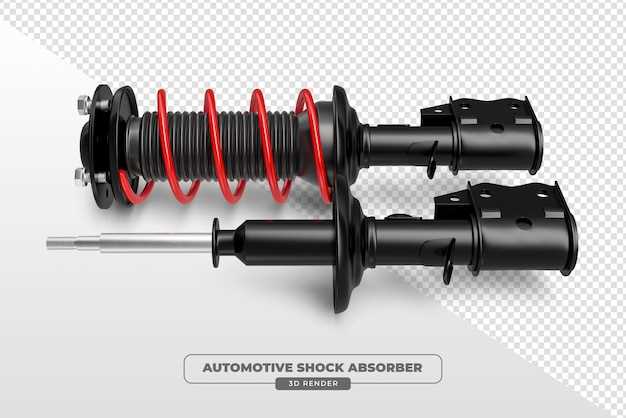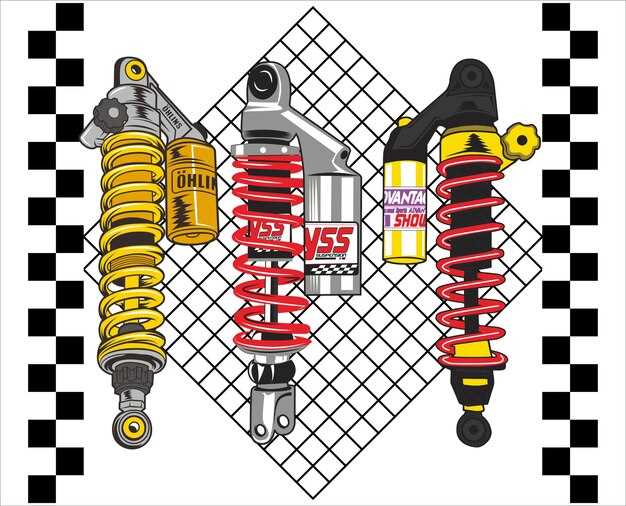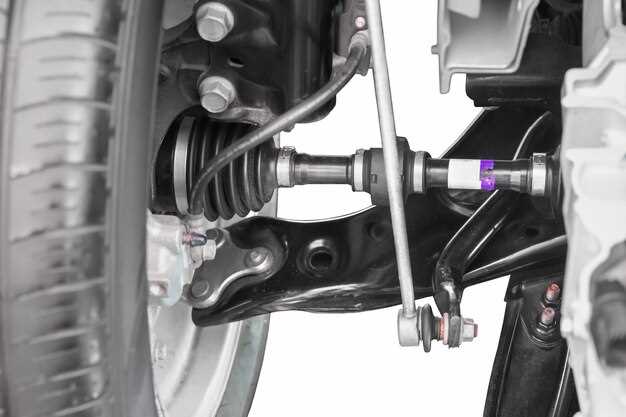
In the world of drag racing, achieving optimal performance hinges significantly on the suspension system of your vehicle. The right suspension setup allows for better weight transfer, improved traction, and ultimately, faster elapsed times. Among the various options available, coilovers and drag shocks are two popular choices that often spark debate among racing enthusiasts.
Coilovers provide a versatile suspension solution that combines adjustable ride height with damping settings, offering racers the ability to fine-tune their setup for different track conditions. This adjustability can lead to better handling and weight distribution, essential factors for any serious competitor. However, it is vital to understand how coilovers perform specifically under the unique demands of drag racing.
On the other hand, drag shocks are designed with a singular purpose–maximizing acceleration. With features that specifically cater to quick weight transfer during launches, drag shocks can be a game-changer when every millisecond counts. Understanding their benefits relative to coilovers is crucial for racers looking to achieve the best possible performance on the track.
This article will delve into the details of coilovers and drag shocks, comparing their advantages and disadvantages to determine which suspension system best suits the needs of modern drag racers. Whether you’re a seasoned competitor or a newcomer to the sport, making an informed choice on your suspension setup can significantly impact your racing success.
Coilovers or Drag Shocks: Which is Best for Drag Racing
When it comes to optimizing your vehicle’s suspension for drag racing, the choice between coilovers and drag shocks can significantly impact your performance on the track. Each option has its unique advantages that cater to different racing styles and vehicle setups.
Coilovers offer a versatile solution, allowing for adjustable ride height and damping settings. This adjustability enables racers to fine-tune their suspension for various track conditions and preferences. Additionally, coilovers typically provide better handling and cornering capabilities, which can be beneficial in drag racing where short turns or maneuvers are involved. Their design can lower the center of gravity, improving weight transfer during acceleration.
On the other hand, drag shocks are specifically engineered for straight-line performance. They are designed to manage weight transfer efficiently, allowing for optimal traction during launches. Drag shocks often feature a stiffer compression setting, which prevents excessive squat and helps maintain tire contact with the track. This attribute is crucial for achieving maximum acceleration and minimizing wheel spin.
Ultimately, the choice between coilovers and drag shocks depends on your specific racing goals. If you prioritize adjustable suspension settings and versatile performance across various driving conditions, coilovers may be the superior option. However, if your focus is solely on achieving the best possible launch and straight-line speed, investing in quality drag shocks could yield better results. Consider your racing style, vehicle setup, and track conditions to determine which suspension system aligns best with your performance objectives.
Understanding the Key Differences Between Coilovers and Drag Shocks

When it comes to drag racing, the choice of suspension can significantly influence the performance of a vehicle. Two popular options are coilovers and drag shocks, each designed with different racing conditions in mind.
Coilovers
Coilovers are a type of suspension system that combines a shock absorber and a coil spring into a single unit. They offer several advantages:
- Adjustability: Coilovers typically allow for ride height and damping adjustments, enabling the driver to customize the suspension setup for specific racing conditions.
- Handling: Designed for both on-track performance and cornering grip, coilovers enhance overall handling, which can be beneficial in a race with tight turns.
- Stability: The increased stiffness and low center of gravity help in maintaining stability during high-speed runs.
Drag Shocks
Drag shocks, on the other hand, are specifically designed for straight-line racing. They focus on maximizing traction during acceleration and minimizing weight transfer. Key features include:
- Compression and Rebound: Drag shocks are tailored for rapid compression and controlled rebound. This helps keep the tires planted during hard launches.
- Weight Transfer Management: Aimed at optimizing weight transfer to the rear wheels, enhancing grip and traction on the starting line.
- Limited Adjustability: While some drag shocks offer adjustable settings, they generally have fewer adjustment options compared to coilovers, prioritizing performance consistency over variability.
Conclusion

In summary, the main differences between coilovers and drag shocks lie in their design and purpose:
- Coilovers provide a versatile suspension solution suitable for a mix of racing styles with adjustable features.
- Drag shocks focus specifically on enhancing straight-line performance and traction during drag racing.
Your choice should be based on the racing style you prioritize. For those targeting optimized drag performance, drag shocks are likely the better option. However, if you desire a flexible setup that accommodates various racing scenarios, coilovers may be more suitable.
How Suspension Setup Affects Launch and Traction in Drag Racing
The suspension setup plays a crucial role in determining a vehicle’s performance during a drag race. Proper tuning of the suspension affects how the car transfers weight, which is essential for maximizing traction at the start of the race.
When a car launches from a standstill, weight shifts from the front to the rear. This weight transfer is vital because it allows the rear tires to gain more grip on the track. A well-tuned suspension will enhance this transfer, allowing for a quicker and more effective launch. If the suspension is too stiff, it may not allow enough weight to shift to the rear, leading to tire spin and a compromised start.
Conversely, if the suspension is too soft, the car may suffer from excessive weight transfer that can lead to instability. During acceleration, an ideal setup balances stiffness and softness. Adjustments in shock damping and spring rates can help optimize this balance, ensuring an efficient transfer of weight while maintaining stability.
Another important aspect is the adjustment of ride height. Lowering the car can improve aerodynamics and lower the center of gravity, which enhances traction. However, if too low, it may cause bottoming out, negatively affecting performance. Therefore, finding the right height is essential for maximizing both launch and traction.
Additionally, the choice between coilovers and drag shocks significantly impacts the suspension’s effectiveness. Drag shocks are specifically designed to handle the unique forces experienced during racing, offering quicker rebound and compression rates. This allows for more consistent performance during launches and improved traction off the line.
In conclusion, optimizing suspension setup is critical for achieving outstanding launch and traction in drag racing. By fine-tuning aspects such as weight transfer, ride height, and shock choice, racers can significantly enhance their vehicle’s performance and increase their chances of success on the track.
Factors to Consider When Choosing Suspension for Your Drag Car
When it comes to optimizing your drag car’s performance, the choice of suspension is critical. Several key factors should be evaluated to ensure that your setup meets the specific demands of drag racing.
1. Weight Transfer
Effective weight transfer is essential for maximizing traction during a launch. A suspension system designed for drag racing should facilitate the movement of weight to the rear wheels, enhancing grip. Examine how your suspension setup manages weight shift, as this will directly impact your acceleration times.
2. Adjustability
Many drag racing suspensions offer adjustable features, allowing racers to fine-tune settings for different track conditions or car setups. Consider a system that allows for adjustments in ride height, compression, and rebound settings. This versatility can make all the difference in achieving optimal launch performance.
3. Stiffness and Damping
Your drag car’s suspension stiffness and damping will influence both traction and stability. A stiffer setup may provide better performance on smooth tracks but could lead to a harsher ride on uneven surfaces. Balance the stiffness to ensure maximum contact with the track while maintaining comfort and control.
4. Type of Suspension
Choosing between coilovers and drag shocks is paramount. Coilovers provide a comprehensive suspension system with adjustable spring rates and ride height, while drag shocks are specialized for high-impact scenarios. Determine which option aligns better with your racing goals and vehicle specifications.
5. Compatibility with Vehicle Setup
Ensure your suspension choice is compatible with other components of your drag car, including tires, engine power, and drivetrain. An effective suspension system works in harmony with the entire vehicle setup, providing the best performance outcomes.
6. Budget Considerations
While investing in high-quality suspension can provide significant performance benefits, it’s essential to stay within your budget. Evaluate different options and consider their long-term performance and reliability to ensure you get the best value for your investment.
By considering these factors, you can select a suspension system that will enhance your drag racing performance, offering better traction, stability, and adjustability tailored to your unique racing style.



